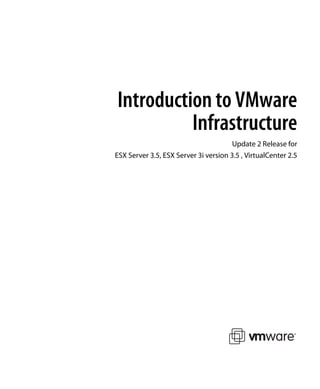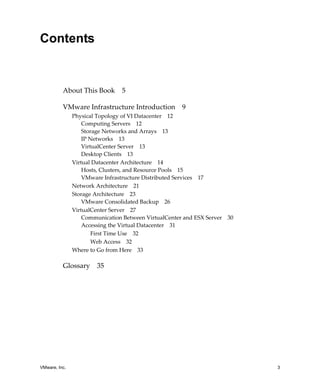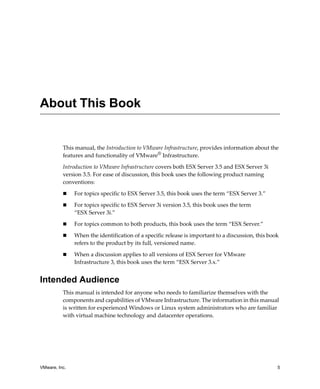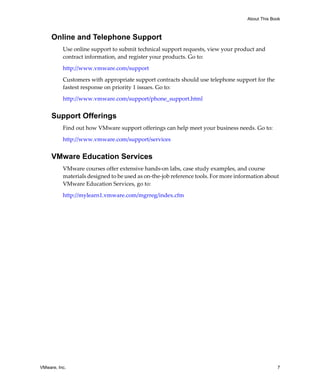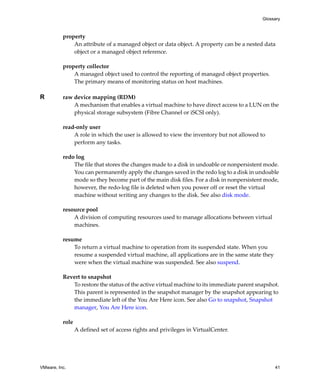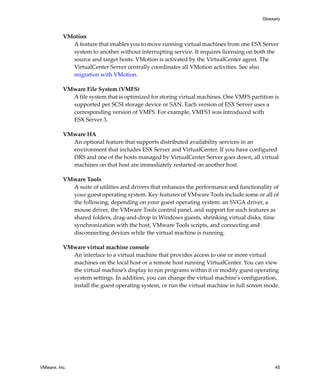VMware Infrastructure is a full virtualization suite that provides comprehensive virtualization, management, and automation capabilities. It virtualizes physical hardware resources across servers and provides pools of virtual resources. It also includes distributed services that enable fine-grained resource allocation, high availability, and consolidated backup of the entire virtual datacenter. The main components are ESX Server, which provides the virtualization layer, and VirtualCenter Server, which is used to centrally manage virtualized environments.
